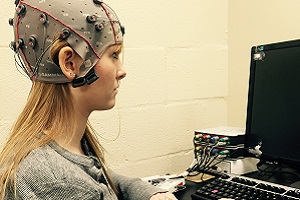Want to Participate?
For questions regarding undergraduate research assistant positions or research participation opportunities, contact Nate Herr.

We are currently exploring authentic emotional expression and identification of authentic facial emotion. Historically, studies testing emotion recognition have used stimuli of individuals expressing emotions based on a directional prompt for which emotion to express (e.g., anger, sadness, etc.). While validated, these stimuli do not fully capture authentic emotional experience. The present study attempts to address this issue by recording authentic emotional experiences of individuals with the purpose of creating a new emotional stimulus that the lab will use for future studies related to emotion recognition.
Our lab is also currently exploring telehealth applications of emotion regulation strategies.
Our lab recently completed a project in collaboration with Dr. Kate Gunthert and members of her Stress and Emotion lab here at AU. This study used a daily diary approach to explore the proximal predictive factors of interpersonal functioning among couples in intimate relationships. Couples recruited from the community were assessed at baseline, 6-months, and twice daily throughout the study's 21-day duration. Participants also wore unobtrusive wristband activity monitors, which allowed us to explore physiological predictors of daily interpersonal functioning.

One of our recently completed projects examined how individual variables such as emotion regulation, interpersonal functioning, current mood state, and personality factors affect how people attend to cues of emotional experience via the face. By using electroencephalography (EEG), we were able to better understand how patterns of electrical activity in the brain relate to individual differences in facial recognition.
In this lab-based study we explored how negative emotions affect performance on a computer-based point-subtraction task. Participants completed a set of questionnaires before participating in a mood induction task that is intended to evoke mild feelings of sadness. Participants' aggression is measured based their performance on a point-subtraction task, a computerized game where button presses earn subjects money.
Read the article:
Herr, N. R., Jones, A. C., Cohn, D. M., & Weber, D. M. (2015). The impact of validation and invalidation on aggression in individuals with emotion regulation difficulties. Personality Disorders: Theory, Research, and Treatment, 6(4), 310.
This study examined how individuals scan faces when identifying emotions using eye-tracking equipment. Past studies have examined the speed and accuracy of individuals with borderline personality disorder (BPD) in detecting emotions in various facial expression stimuli, but results have been mixed.Some studies have reported greater speed and accuracy for certain emotions (e.g., anger), while others have reported a deficit in emotion recognition. This study aimed to clarify the inconsistencies by using eye-tracking equipment to determine whether individuals with borderline personality disorder symptoms differ in how they attend to cues of emotional experience via the face.
For questions regarding undergraduate research assistant positions or research participation opportunities, contact Nate Herr.
